Hat's Off to the 18th Century
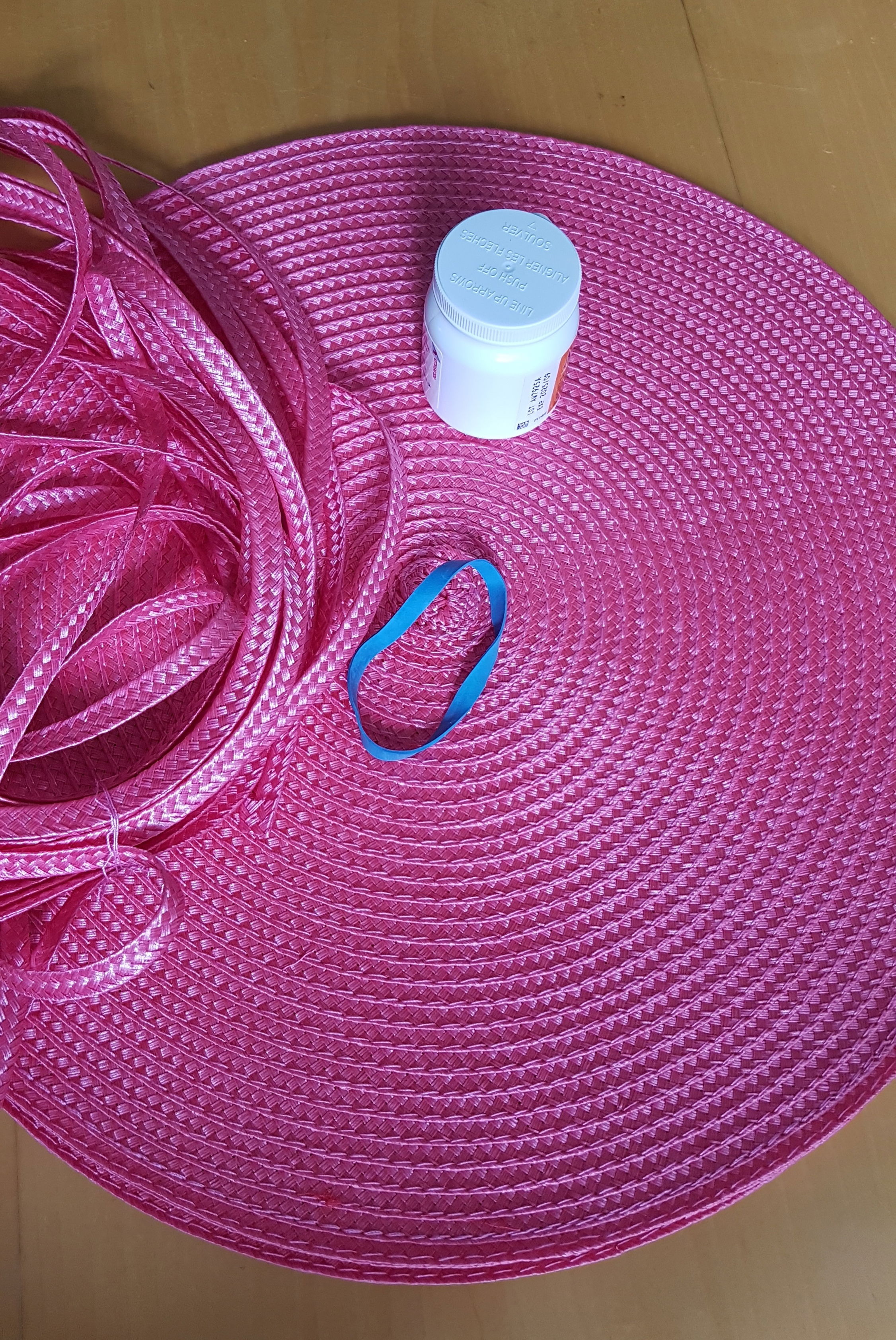
It took awhile, but the buyer finally found some placemats useful for making Bergere hats. Said buyer had been looking for straw hats to deconstruct, but with little luck. Straw plaits on Etsy are available for hat makers, but our shop is sticking to repurposing finds. So placemats it is. For now.
The 3 pink coloured placemats now in stock are certainly intense! So the designer went in search for answers on whether or not straw for hats was dyed in the 18th Century. And Pink was a popular colour in the period. Surprisingly there isn't a lot out there about this topic. Even fellow 18th Century enthusiasts on Facebook were stumped.
It looks like straw was not routinely dyed until the early 1800's. Certainly some straw trimmings were coloured before that, but only a few entirely dyed hats from the 18th Century turned up in internet searches.
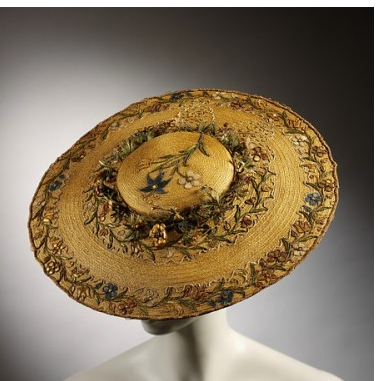
Bergere with dyed straw trim.
https://thedreamstress.com/2013/03/terminology-what-is-a-bergere/
There are black straw hats in some portraits and fashion plates though. Luckily one thrifted placemat is a lovely black, slightly sheer plastic straw. The milliner has put that aside.

Old Maids at a Cat's Funeral - Coloured stipple engraving by J. Pettit after E.G. Byron 1789.
https://wellcomecollection.org/works/bfsayfwt
What follows is some experimental and 'It's all in the way you hold your mouth' kind of millinery. The prototype is actually usable and will certainly do for one of the Queen Anne's new ensembles.
Step 1 meant taking the plastic straw apart. The chain stitching holding it made disassembly easy. The milliner stopped when the correct diameter for the hat was achieved, leaving a bit extra just in case. She also kept as much of the thread as possible, wrapping it around an empty pill bottle for use at a later date. She wisely left some thread on the circle, stitching it off to keep the chain in place and ready to complete the hat. Thread proved to be extra strong, which makes re-stitching the 'straw' less of a problem.
Step 2 involved pulling the centre of the circle over the lid of a pill bottle of correct size. The plastic and chain stitching is flexible enough to allow for this. The crown of an 18th Century chapeau is not very deep and this made the blocking even easier. A wide rubber band helped keep the crown in place, after some fiddling to ensure it measured the same all around. Holding a steaming iron slightly away from the crown helped to mold the plastic. Once the crown cooled the milliner stitched around the bottom of the crown, pulling it up slightly so it maintains it shape.
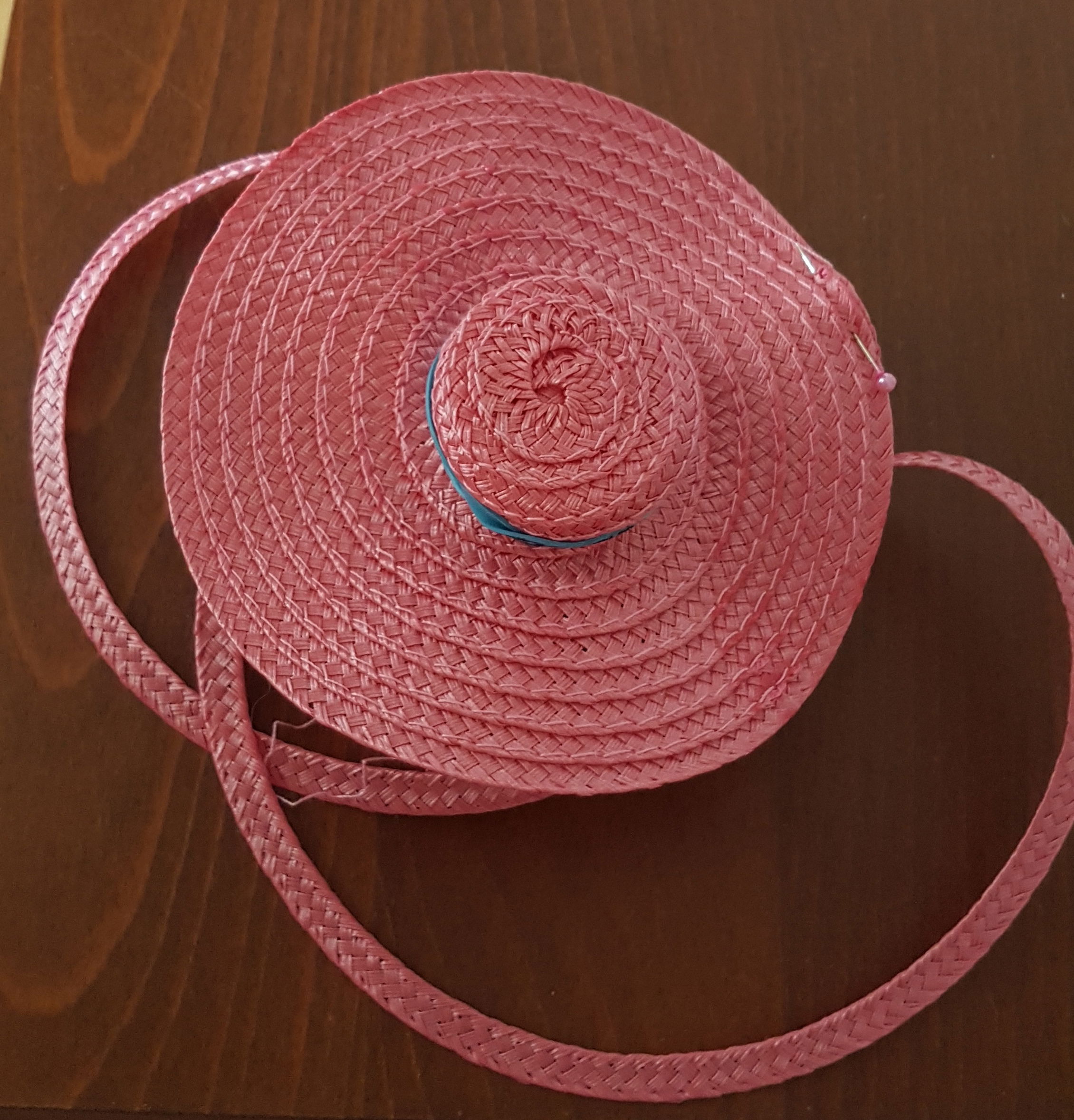
Step 3 had to wait until after the blocked crown cooled and was secured. Squirting steam again, just above the brim and pressing with a piece of cloth to flatten it, the brim was coaxed into laying flat. The plastic once again proves to be advantageous to shaping. The brim can be shaped with steam as the chosen style dictates. Yay.
Step 4 was all about restitching the slowly disappearing end of the straw into the circle, tucking an end under and hiding it inside the brim. An embroidery chain stitch was used to imitate the factory stitch. A bit of glue helped keep the unravelled end tucked in neatly.
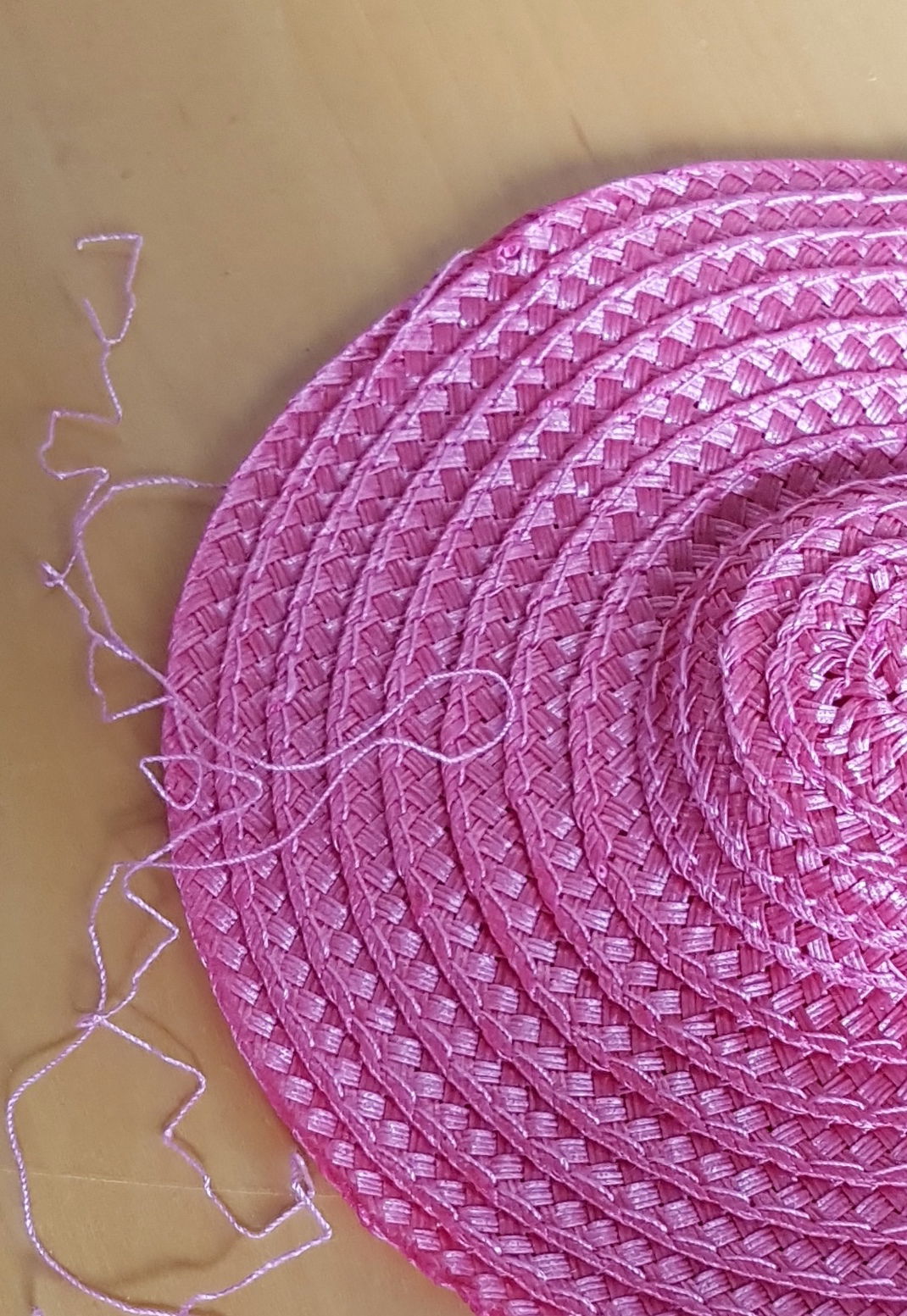
Now, what to do about the 'loud' pink colour? Sharpie pen, while it worked, would just take too long and is expensive. Acrylic paint was likely to peel off. So it was decided to experiment with a spray paint containing both a primer and paint, and usable with plastics.
Research provided the milliner with an example of a straw hat that is completely covered with paint and decorated with silver painted filigree. So paint will not be historically inaccurate.

Painted hat, Switzerland https://collections.mfa.org/objects/121041
Spray painting involves working outdoors with rocks holding plastic down on the deck table and testing wind direction before lightly spraying the outside of the hat. The paint is toxic and should be used with care and gloves. The plastic straw 'eats' a surprising amount of paint and so a heavier hand is needed, ensuring there was no paint pooling anywhere, including on the table.
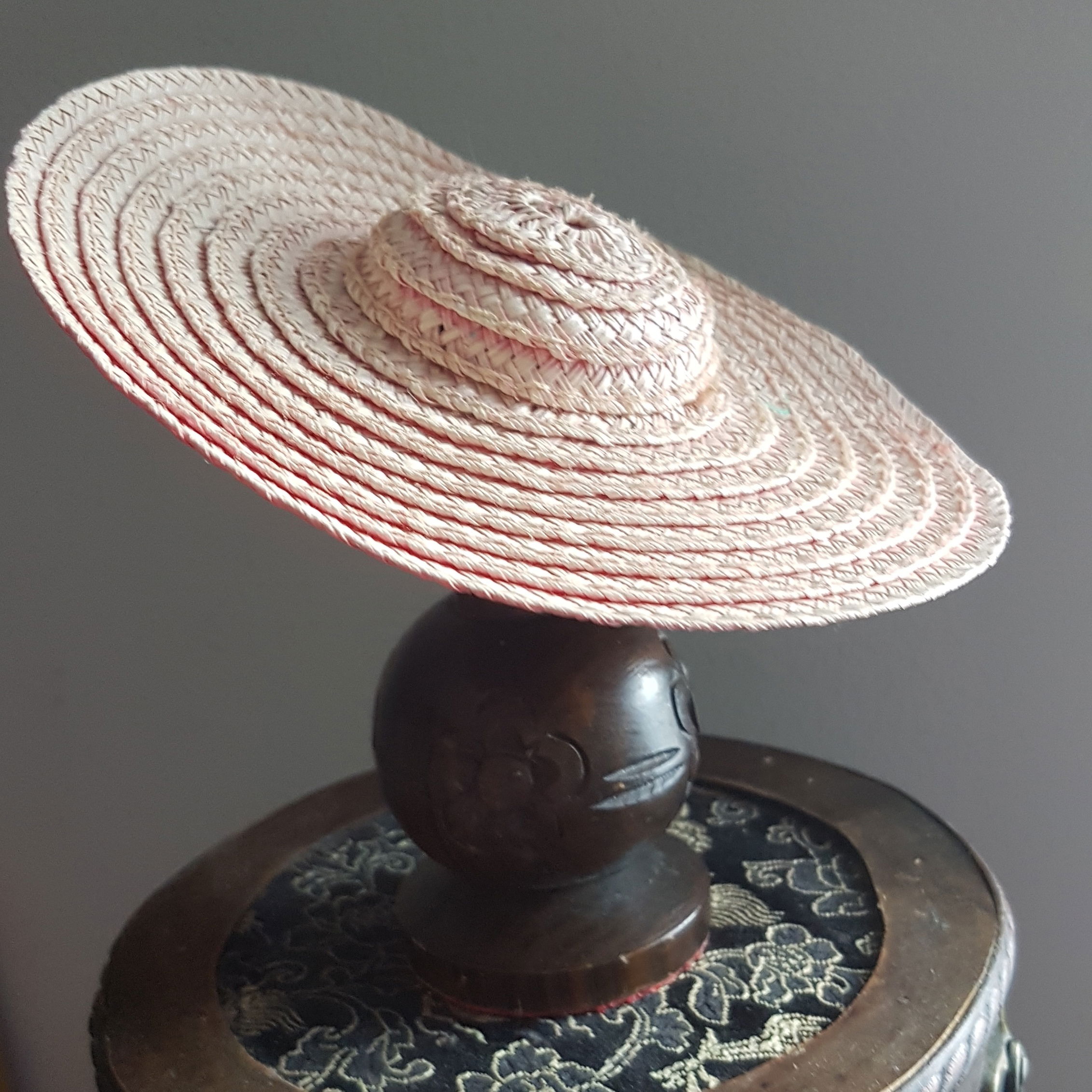
It also takes an exceedingly long time for the paint to dry before the inside could be painted as well. The paint remained sticky for a few days, but eventually set up. Patience is definitely a virtue.
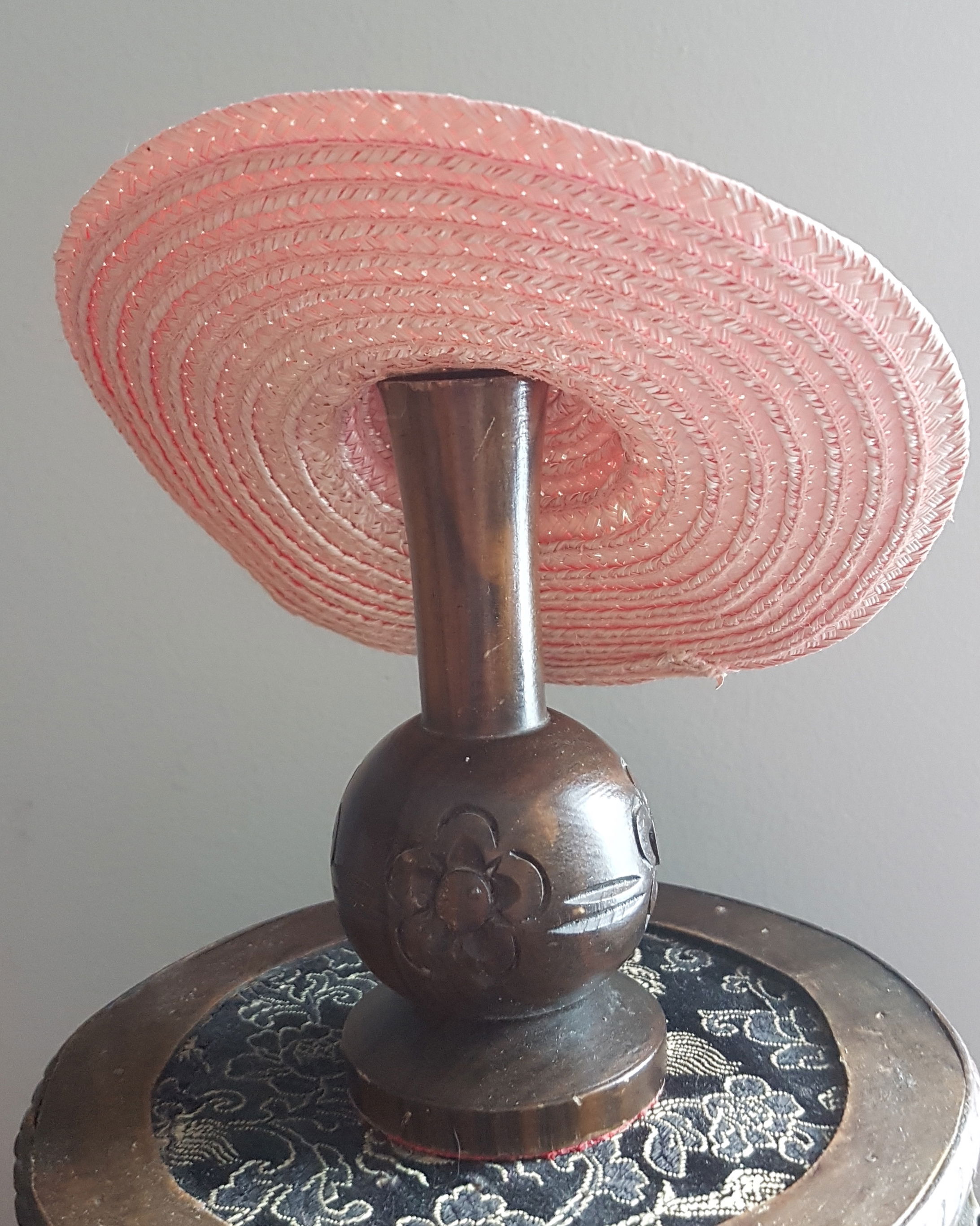
The hat still blushes a light pink, but once decorated, it will do just fine. Many Bergere have a fabric lined brim and that is a choice that will be made later, along with the rest of the decoration, once the new outfit for Abigail is completed.
Many straw Bergere are covered completely with fabric and that may be another way to disguise the bright pink in the future. We'll see if the milliner is up for it.